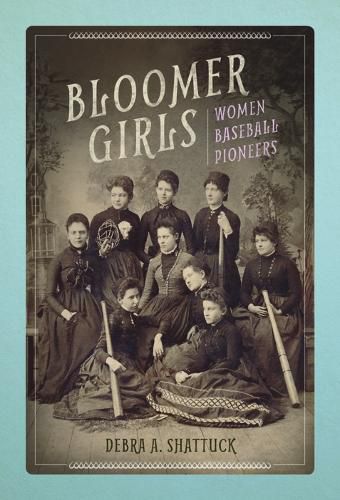Readings Newsletter
Become a Readings Member to make your shopping experience even easier.
Sign in or sign up for free!
You’re not far away from qualifying for FREE standard shipping within Australia
You’ve qualified for FREE standard shipping within Australia
The cart is loading…






Disapproving scolds. Sexist condescension. Odd theories about the effect of exercise on reproductive organs. Though baseball began as a gender-neutral sport, girls and women of the nineteenth century faced many obstacles on their way to the diamond. Yet all-female nines took the field everywhere. Debra A. Shattuck pulls from newspaper accounts and hard-to-find club archives to reconstruct a forgotten era in baseball history. Her fascinating social history tracks women players who organized baseball clubs for their own enjoyment and even found roster spots on men’s teams. Entrepreneurs, meanwhile, packaged women’s teams as entertainment, organizing leagues and barnstorming tours. If the women faced financial exploitation and indignities like playing against men in women’s clothing, they and countless ballplayers like them nonetheless staked a claim to the nascent national pastime. Shattuck explores how the determination to take their turn at bat thrust female players into narratives of the women’s rights movement and transformed perceptions of women’s physical and mental capacity.
Vivid and eye-opening, Bloomer Girls is a first-of-its-kind portrait of America, its women, and its game.
$9.00 standard shipping within Australia
FREE standard shipping within Australia for orders over $100.00
Express & International shipping calculated at checkout
Disapproving scolds. Sexist condescension. Odd theories about the effect of exercise on reproductive organs. Though baseball began as a gender-neutral sport, girls and women of the nineteenth century faced many obstacles on their way to the diamond. Yet all-female nines took the field everywhere. Debra A. Shattuck pulls from newspaper accounts and hard-to-find club archives to reconstruct a forgotten era in baseball history. Her fascinating social history tracks women players who organized baseball clubs for their own enjoyment and even found roster spots on men’s teams. Entrepreneurs, meanwhile, packaged women’s teams as entertainment, organizing leagues and barnstorming tours. If the women faced financial exploitation and indignities like playing against men in women’s clothing, they and countless ballplayers like them nonetheless staked a claim to the nascent national pastime. Shattuck explores how the determination to take their turn at bat thrust female players into narratives of the women’s rights movement and transformed perceptions of women’s physical and mental capacity.
Vivid and eye-opening, Bloomer Girls is a first-of-its-kind portrait of America, its women, and its game.